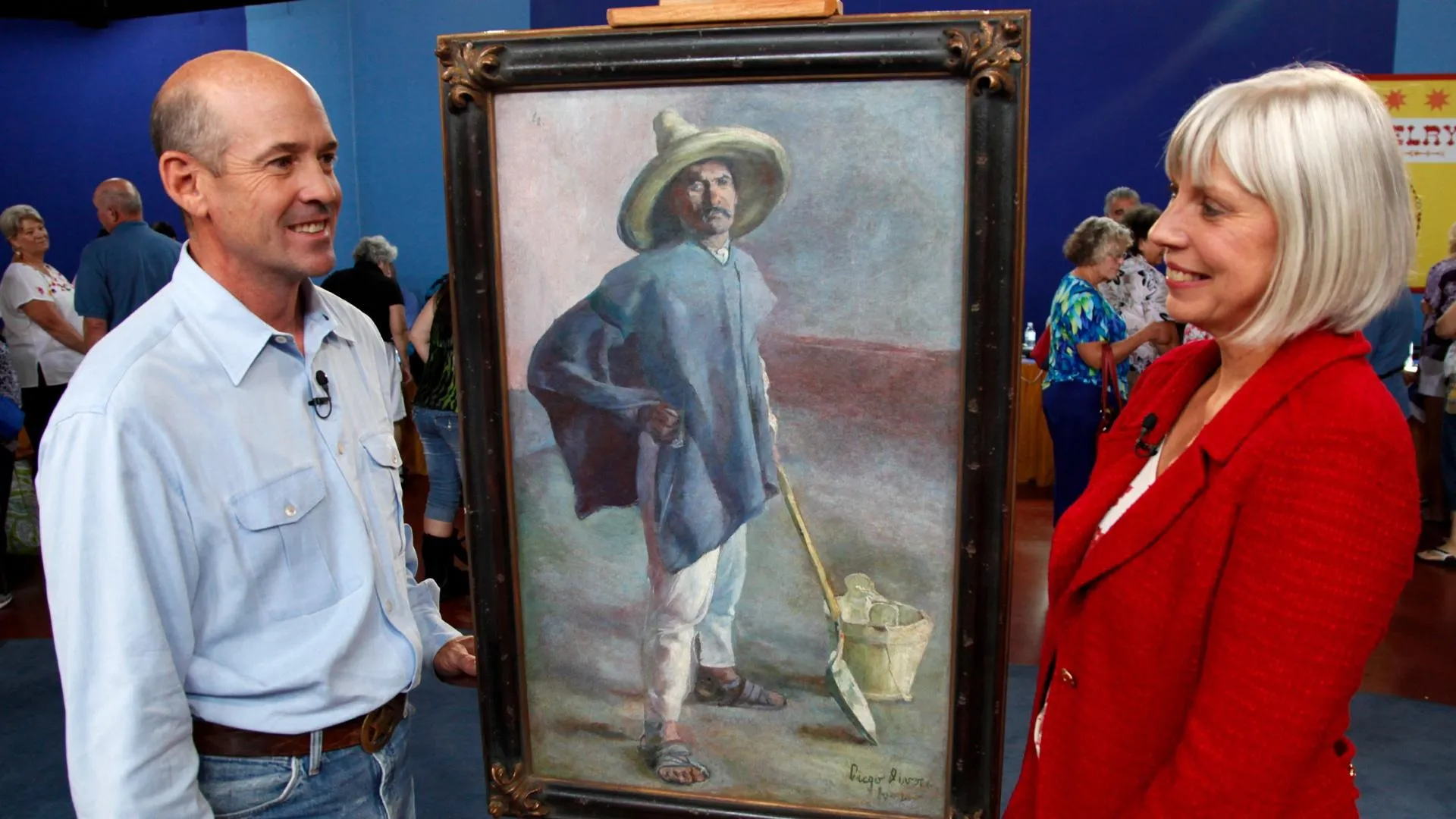GUEST: My aunt told me that this was brought to Holland by the Dutch East Indies Trading Company many, many years ago and was thought to be a forerunner of Delft blue that is so popular and well-known.
APPRAISER: Well, a lot of us do know Delft blue or Delft blue and white ware made in the little town of Delft, in Holland. And there is a certain amount of accuracy in that, that an object like this inspired the production of Delft blue and white. This teapot was probably made between about 1690 and about 1700 or 1710.
GUEST: I'm amazed.
APPRAISER: So we're looking at a teapot that's a little over 300 years old. Made at the high point of the success of the Dutch East India Company, which brought about extraordinary wealth into the little country of Holland. The wealth came primarily from trade with the East. The Dutch were the best at building ships. In the 17th century, they built fleets of ships that were able to go around the Horn of Africa, pick up stuff in China and all points in between, and bring it back. But among the products that they brought back from China was blue and white porcelain. First of all, it's small. But it's not small if you lived 300 years ago. This is the size of a teapot. The form of it, what we call a "melon form," is a classic Chinese form of teapot, which began to be exported to the West in the latter part of the 17th century. This is painted with a stylized tulip, which identifies it as being made for the Dutch market. You can also see next to the tulip a little, tiny piece of gilding. Originally, this would have been picked out in gold throughout, which would complement this little silver gilt metal chain and mounting here. Beautiful mounts, by the way, including this delicate little hinged end to the spout with the bird finial. A beautiful little object, I think. Exquisitely made, exquisitely mounted and exquisitely preserved by your family. Now, what does this add up to in terms of value? Has your family ever had it valued or did they ever remark on that?
GUEST: Not at all, not at all.
APPRAISER: Even though the age is great, it's a beautiful object, well preserved, it's not that rare an object, and the collectors for it are relatively limited. Nevertheless, if it came to auction today, a piece like this would certainly see an auction estimate of, I would say, between $800 and $1,200.
GUEST: I'm amazed. That's wonderful.
APPRAISER: And I'd be surprised if it didn't bring at least that, and maybe more.
GUEST: That's very nice to hear. Thank you so much.



